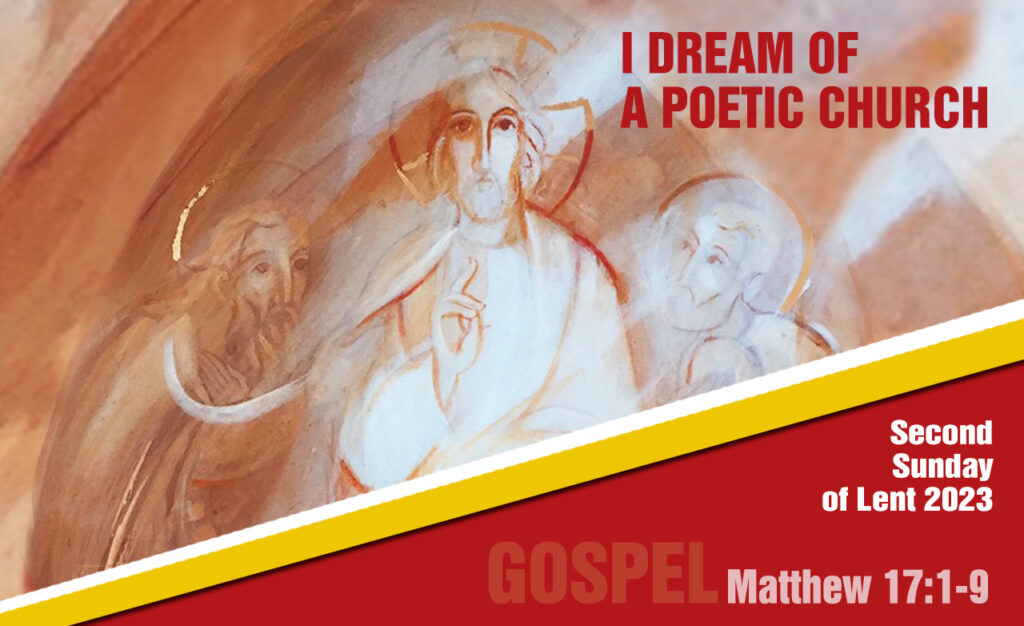I Dream of a Poetic Church
And he was transfigured before them, as if it were the most natural thing in the world.
I am always struck by the simplicity of transfiguration, which seems to me to be the height of poetic expression and reminds me of the touching experience of the “art” of poverty.
In order to be understood, transfiguration must be inclusive: it must embrace everything, allowing the deep truth of things–all things–to sing. It must allow us to glimpse the bright joy of lovers, but it must also enable us to recognize life in the last breath of a dying person. And this should be true of everything. Transfiguration is the “art of the poor,” and, as such, it must include the cross and death.
Transfiguration means learning to recognize the light present in the twists and turns of life, in the hours of each day, in the heart of each moment.
Climbing the Mount of Transfiguration is something we must do on a daily basis. It is perhaps what really sets the Gospel apart. Transfiguration should be our ongoing, poetic approach to life. Our gaze is transfigured when we learn to let its warm light penetrate us.
Let us learn to listen to the intimate voice of things.
Let us learn to see the beauty that is often hidden under the weight of the rubbish (defeats, mistakes, trivialities, etc.) that burdens us.
Let us learn to look at each person with the eyes of one who knows well that every human heart contains a light begging for a chance to shine and that our own personal transfiguration on the road to conversion is always possible.

